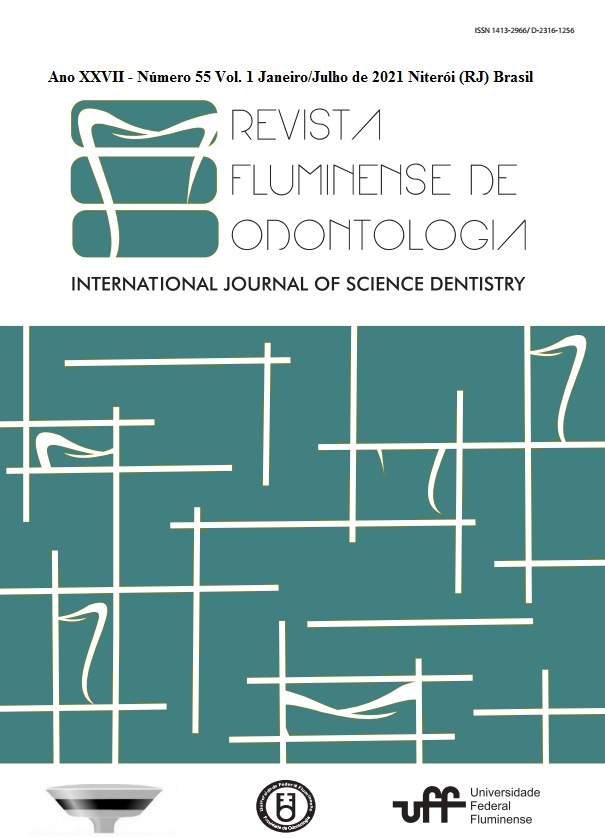Intubação Submentoniana: Quando indicar? – Revisão de literatura
DOI :
https://doi.org/10.22409/ijosd.v0i55.43117Résumé
A intubação submentoniana (ISM), é uma derivação da intubação orotraqueal sem que o tubo passe pela oclusão dentária e lábios do paciente, tendo sua maior indicação a possibilidade da realização da ventilação mecânica do paciente durante um procedimento sob anestesia geral, sem que o tubo atrapalhe as manobras cirúrgicas que exijam um bloqueio maxilo-mandibular transoperatório associado à manipulação da região naso-órbito-etmoidal, evitando assim,a necessidade de uma traqueostomia eletiva. O objetivo deste trabalho é realizar uma revisão de literatura sobre a ISM, abordando suas indicações, contraindicações, vantagens e desvantagens na realização desta técnica. Onde apesar de simples, é fundamental que o profissional tenha o domínio da anatomia óssea e neurovascular da região e do exato posicionamento das glândulas sublinguais, submandibulares e seus ductos, a fim de evitar complicações trans e pós-operatórias imediatas ou tardias. Essa técnica é extremamente bem indicada para facilitar o tratamento cirúrgico de pacientes portadores de múltiplas fraturas da face, reduzindo riscos de complicações graves durante o manejo das vias aéreas pelo médico anestesiologista, sendo de realização rápida, segura e de baixa morbidade.
Palavras-chave: intubação submentoniana, intubação endotraqueal, trauma de face.
Abstract
A submental intubation (ISM) is a derivation of orotracheal intubation without a tube or passes through the patient's dental occlusion and lips, with its greatest indication being the possibility of performing the patient's mechanical technique during the procedure under general anesthesia, without a tube disturbing maneuvers surgical procedures that require a maxillomandibular transoperative block associated with manipulation of the naso-abortion-ethmoidal region, thus avoiding the need for an elective tracheostomy. The objective of this work is to carry out a literature review on ISM, addressing its indications, contraindications, advantages and advantages in carrying out this technique. Where, although simple, it is essential that the professional has mastery of the bone and neurovascular anatomy of the region and the exact level of the sublingual, submandibular glands and their ducts, an end to prevent overflow and immediate or late postoperative. This technique is extremely well indicated to facilitate the surgical treatment of patients with multiple facial fractures, risks of serious complications during the management of the airways by the anesthesiologist, being fast and safe and safe and with low morbidity.
Keywords: submental intubation, endotracheal intubation, face trauma.


